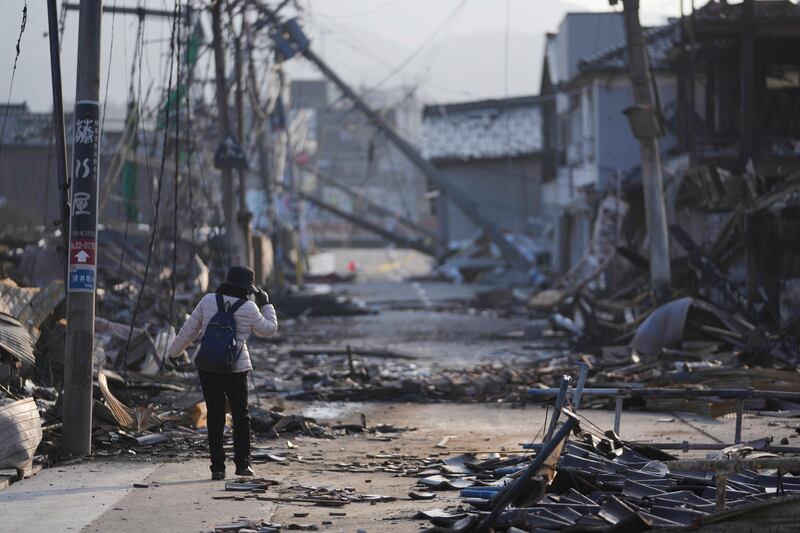A woman in her 90s has been pulled alive from a collapsed house in western Japan, 124 hours after a major earthquake slammed the region, killing at least 126 people, toppling buildings and setting off landslides.
The woman in Suzu city, Ishikawa prefecture, had survived for more than five days after the 7.6 magnitude tremor that hit the area on Monday. National TV news footage showed helmeted rescue workers covering the view of the area with blue plastic, and the woman was not visible.

Chances of survival after earthquakes diminish after the first 72 hours, but several other dramatic rescues have been reported over the past few days as soldiers, firefighters and others joined a widespread effort.
Among the 126 dead was a five-year-old boy who had been recovering from injuries he suffered when boiling water spilled on him during Monday’s earthquake. His condition suddenly worsened and he died on Friday, according to Ishikawa prefecture, the hardest hit region.
Israeli security services point finger at Netanyahu as they own up to errors over Hamas’s October 7th incursion
Turkey’s Erdogan makes risky bet on peace with Kurds
‘We’ll rest when we win’: No let-up for Ukraine’s medics and rescue teams as war with Russia grinds on
Trump-Starmer summit: British PM produces masterstroke of political theatre as he seeks to cement bromance
Aftershocks threatened to bury more homes and block roads crucial for relief shipments. Officials warned that roads already cracked could collapse completely, and the risk was growing with rain and snow expected overnight and into Sunday.
Wajima city has recorded the highest number of deaths with 69, followed by Suzu with 38. More than 500 people were injured, at least 27 of them seriously.

The quakes left roofs sitting on roads and everything beneath them crushed flat, roads were warped like rubber, and fire turned one neighbourhood in Wajima to ashes.
More than 200 people are still unaccounted for, although the number has fluctuated. Eleven people were reported trapped under two homes that collapsed in Anamizu.
In an unusual gesture from North Korea, leader Kim Jong-un sent a message of condolence to Japanese prime minister Fumio Kishida, the official Korean Central News Agency reported on Saturday. Japan earlier received messages expressing sympathy and promises of aid from US president Joe Biden and other allies. Government spokesman Yoshimasa Hayashi told reporters that Japan was grateful for all the messages, including the one from North Korea. He said the last time Japan received a condolence message from Pyongyang for a disaster was in 1995.
Along Japan’s coastline power was gradually being restored, but water supplies were still short, and emergency water systems were also damaged.
Thousands of troops were flying and trucking in water, food and medicine to the more than 30,000 people who had fled to auditoriums, schools and other facilities. The national Yomiuri newspaper reported that its aerial study had located more than 100 landslides in the area, and some were blocking lifeline roads.














